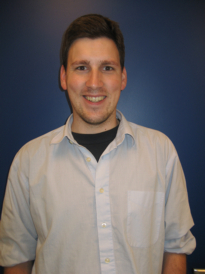Fractional flux quanta in high-Tc /Low-Tc superconducting structures
Promotion date: 25. June 2009
Promotor: Prof.dr.ir. Hans Hilgenkamp
| -This thesis concerns a remarkable phenomenon which occurs in rings connecting high-Tc superconductor YBCO to the low-Tc superconductor niobium. -Spontaneous generated current leads to the formation of fractional flux quanta. These fractional flux quanta have been used for a fundamental study, and for the realization of a novel superconducting logic circuit element. -Also the first controlled on-chip manipulation and read-out of two antiferromagnetically coupled fractional flux quanta in a long YBCO/Nb ramp-type Josephson junction containing two corners, has been demonstrated. -The work described in this thesis provides a solid basis for the application of half-integer flux quanta, both for fundamental studies of the order parameter symmetry and for applications in superconducting digital electronics. |
Were there any specific moments during the thesis project that you remember very well?
Although the study has a strong fundamental character, a great deal of my work involved the fabrication of different kind of rings. These were then sent to America where they were analyzed by experts using a special scanning squid microscope. The LowT-group has a long term relationship on this matter, with expert John Kirtley, of IBM. The results were then sent back to us.
Receiving and analyzing the experimental data, which confirmed our expectations, was a great joy. It was also a great feeling to see the toggling flip-flop behaviour in a long 0-π-0 junction very clearly. We managed to build these junction on a chip that we could read out. We are the first to do so.
A third specific moment was when we observed the controlled toggling in a novel circuit element which makes use of so-called π-rings. Incorporating such rings promises to improve design, fabrication and operation margins.
What facilities did you use in the Mesa+ cleanroom?
Pulsed laser deposition was an important technique, also X-ray diffraction. As a FOM/LowT researcher, I used several kind of techniques. This is a strong point, I believe, of Mesa+. There are no walls separating specialists. Everybody can benefit using the facilities present, and experts help out in various stages of research projects.
We received a very nice gesture from IBM, by the way. After the departure of John Kirtley, our group was awarded the squid scanning microscope, because of the good contacts built up. I think Mesa+ and especially our group can benefit a lot from this new instrument.
What are your future plans?
I am curious about working in industry after my promotion, most probably as part of a research team. I feel the need to discover what it is like to work in a new environment. After this experience I can tell if I prefer being an academic researcher, or not.
In what way did you grow as a researcher during this project?
First of all, I learned a lot of different techniques and I am much more skilled in reading scientific articles now, learning from it and using it for my research. Also, I learned that politics and strategic choices are part of the research community, in a way I didn’t expect at all when I just started. In order to reach research goals, it is necessary to act intelligently in contacts with research fellow colleagues and in planning research facilities that are scarce.

